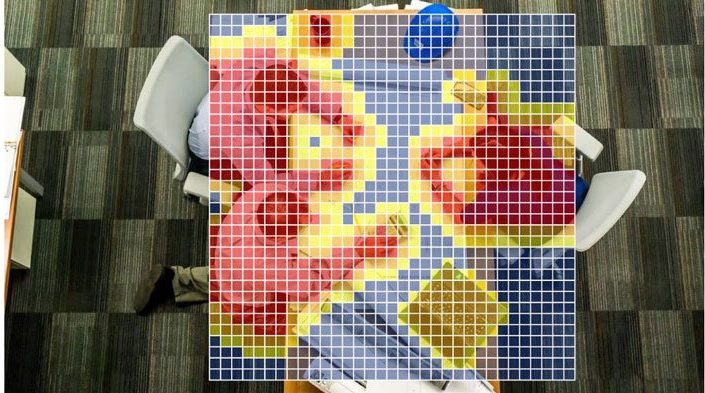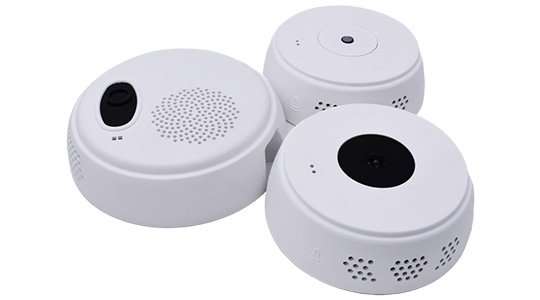Imagine a device that silently counts how many people enter and exit your store, all without relying on cameras or visible light. This is the power of infrared thermal people counting devices.
Time-of-Flight (ToF) people counting technology is a valuable tool for improving the user experience in public buildings such as museums, art galleries, universities, and public libraries. This technology uses infrared sensors, not cameras, to detect the presence and movement of individuals in a designated area, providing valuable yet anonymous data that can be used to optimize space usage, staffing and operational efficiency.
How does thermal people counting devices work?
The core technology behind these devices is thermal imaging. Unlike traditional cameras that capture visible light, thermal cameras detect infrared radiation, the heat signature emitted by all objects with a temperature above absolute zero. This makes them ideal for people counting as humans are readily identifiable due to their higher temperature compared to their surroundings.
There are two main types of infrared people counters:
Passive infrared (PIR) sensors: These emit no radiation and rely solely on detecting changes in infrared radiation within their field of view. PIR sensors typically use one or more pairs of infrared beams to create a virtual tripwire. When a person crosses the beam, the change in temperature is detected, triggering a count.
Thermal imaging cameras: These advanced sensors create a visual image based on the infrared radiation detected. Sophisticated algorithms then analyze the image to identify and count people within the defined area.
Business benefits of infrared people counting

The applications of infrared people counting extend far beyond simple headcounts. Here’s how businesses can leverage this technology:
Enhanced customer experience: By understanding traffic patterns, businesses can optimize staffing levels during peak hours, reducing wait times and improving customer satisfaction.
Data-driven marketing: People counting data can reveal insights into customer behavior, such as popular browsing areas and dwell times in specific zones. This information can be used to optimize product placement, promotional campaigns, and store layout.
Improved space utilization: By tracking occupancy in real-time, businesses can identify underutilized areas and optimize space allocation. This can lead to cost savings on rent or increased revenue by maximizing usable space.
Energy efficiency: Occupancy data can be used to automate heating, ventilation, and air conditioning (HVAC) systems, reducing energy consumption when spaces are vacant.
Security and safety: People counting can be integrated with security systems to trigger alerts for unusual activity or unauthorized entries.
Technical considerations
While infrared people counting offers numerous benefits, some technical aspects need to be considered:
Field of view: The sensor’s field of view determines the area it can effectively monitor. Businesses need to ensure proper placement to capture all entry and exit points.
Counting direction: Some sensors can differentiate between incoming and outgoing traffic, providing even richer data.
Privacy concerns: While thermal imaging doesn’t capture identifiable features, some users might have privacy concerns. Look for GDPR-compliant solutions that anonymize heat signatures entirely.
Infrared thermal people counting devices offer a powerful tool for businesses to gain valuable insights into customer behavior and space utilization. With their ability to function in various lighting conditions and their non-intrusive nature, these devices are poised to play a significant role in optimizing operations and improving the overall customer experience.
Optimize operations and user experience in staff cafeterias and in-house restaurants
If employees are comfortable and have a positive experience in their staff cafeteria or in-house restaurant, they will feel more satisfied with their work environment. Terabee people counting solutions can give accurate, anonymous data on cafeteria or restaurant occupancy and peak dining times. This helps companies to enhance canteen and restaurant operations, so that they perform more efficiently and effectively, and staff satisfaction is improved.
Data can include real-time occupancy information so team members can choose the best time to eat and, if the staff dining areas are large, guidance to find free seats. This data can be used by staff canteen operators to have smoother, more efficient services and ultimately, happier customers. Waiting times for staff can be reduced, they can be sure to eat food while it is warm and fresh, and canteen throughput on a daily basis can be increased.
People counters from Terabee
Terabee’s Time-of-Flight and thermal infrared people counters provide precise data collection, ensuring GDPR compliance and offering opportunities for efficiency in facilities management.

Terabee People Occupancy Counting stands out with its wide area coverage and utilization of the latest thermal technology. Designed to be GDPR-compliant-by-design, this device is particularly well-suited for optimizing expansive areas such as open plan offices and coworking spaces.
By detecting thermal signatures, Terabee People Occupancy Counting ensures non-intrusive and anonymous data collection, safeguarding personal identities effectively.
The Terabee People Flow Counting L-XL and People Flow Counting M 2.0 models prioritize analyzing the movement and patterns of individuals within a space, transcending simple headcounts. These devices excel in optimizing space utilization, minimizing energy consumption, enhancing customer experiences, and facilitating efficient navigation within commercial environments.
